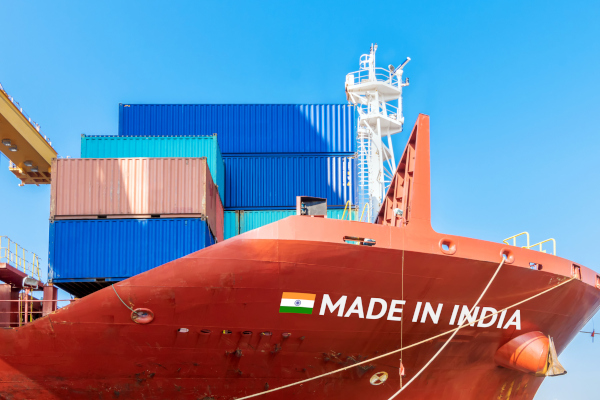As U.S. companies continue to shift away from Chinese manufacturing, a new frontrunner has emerged. A new study by Boston Consulting Group (BCG) has found that India may be the biggest winner, with exports to the U.S. increasing by $23 billion, a 44% increase from 2018 to 2022.
From a pandemic and natural disasters to trade wars and supply backlogs, years of continued trade disruption have driven many companies to shift where they manufacture and source product, with more than 90% of the North American manufacturers surveyed by BCG relocating some production from China in the past five years. The same number say they plan to make similar moves in the next five years.
India, Mexico and Southeast Asia show promise as future manufacturing hubs
The study highlights India as a notable future export destination, in addition to Mexico and Southeast Asia. What these areas have in common is competitive cost structures, large labor pools, and growing scale and capabilities across industries. Where India stands out is its large domestic market and favorable government incentives. However, the country is still limited by infrastructure and logistics policies.
“One of the things I noticed the most when I worked in India was the lack of logistics infrastructure,” says consultant Brittain Ladd. “India’s logistics costs are about 14% to 18% of GDP. India must reduce the costs to 10% or less of GDP to be competitive with Asian exporters.”
Ladd adds that India has committed billions to modernize its highways, rail lines, and improve the country’s ports. However, the country still lags Japan, South Korea, and mainland China in terms of port capacity and operations.
“Will India become the next China? No. That’s not the goal that India should aspire to achieve,” adds Ladd. “Instead, India should aspire to become the leader in designing and accelerating at digitally connected manufacturing, warehousing, logistics, and third-party logistics and transportation services.”
Results still to be seen from changes in global manufacturing
Despite these continued plans to move manufacturing out of China, the study also revealed these shifts have not been completely successful. Only about 55% of those surveyed say their production moves have fully achieved their objectives, which include cost savings, better access to labor, and faster time to market.
Jonathon Van Wyck, an author of the study and managing director and partner at BCG, says they attribute this to companies lacking a holistic market-back approach.
“In our experience, a successful production footprint strategy can reduce manufacturing and supply chain costs by 20% to 50% while improving resiliency and sustainability,” he says.
And while these moves have not been a complete success, the study notes that executives are willing to sacrifice more than 2% of gross margins, on average, to improve supply chain resilience and avoid further supply chain disruptions down the road.
SC
MR


Latest Supply Chain News
- Manufacturing again contracts in October, reports ISM
- 5 common communication issues
- Three frameworks for creative problem-solving in supply chain
- Mitigating geopolitical uncertainty: 4 essential tactics for industrial CSCOs
- Supply chain strategy for medical devices: A Q&A with industry expert Sanjay Gupta
- More News
Latest Podcast

 Explore
Explore
Procurement & Sourcing News
- 5 common communication issues
- Three frameworks for creative problem-solving in supply chain
- Mitigating geopolitical uncertainty: 4 essential tactics for industrial CSCOs
- Supply chain strategy for medical devices: A Q&A with industry expert Sanjay Gupta
- Inventory Management and the Supply Chain: Outlook 2025
- How technological innovation is paving the way for a carbon-free future in logistics and supply chains
- More Procurement & Sourcing
Latest Procurement & Sourcing Resources

Subscribe

Supply Chain Management Review delivers the best industry content.

Editors’ Picks




